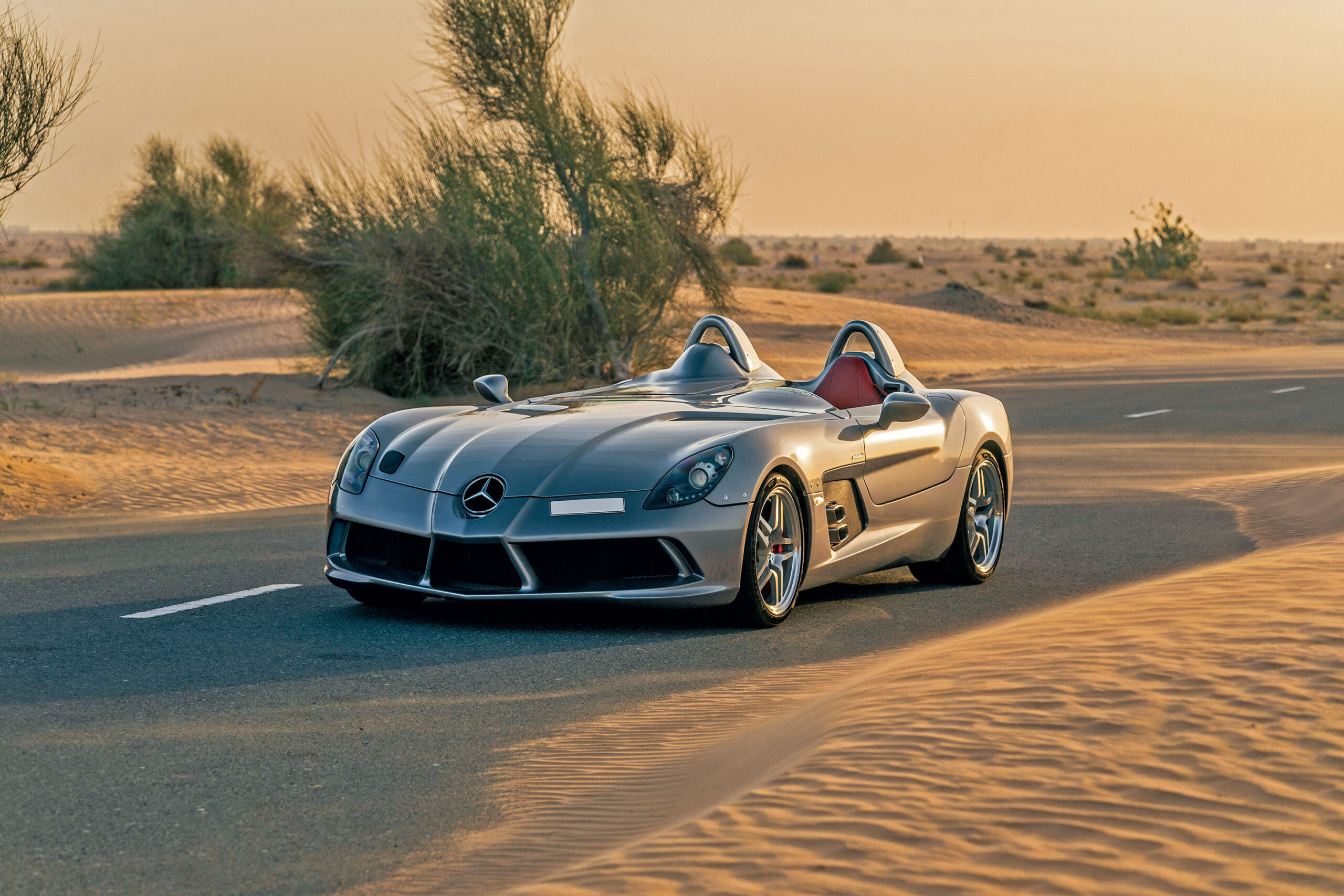Chassis Number: WDD1999761M900066
The Mercedes-Benz SLR McLaren Stirling Moss was unveiled at the 2009 North American International Auto Show, a lightweight speedster variant of the SLR as potent in performance as it is arresting in appearance. Just 75 examples were built, offered exclusively to existing SLR owners as a modern homage to the exquisite 300 SLR that Stirling Moss campaigned to victory in the 1955 Mille Miglia.
Rather like the 300 SLR, nearly all the creature comforts of the car it is based on were sacrificed in the pursuit of performance, aesthetics and extreme driving enjoyment. Even the windscreen and roof were forfeited, which not only adds to the visual drama but ramps up the intensity of the driving experience tenfold.
Indeed, when Car magazine road-tested the car in 2009, journalists likened the experience of full-throttle acceleration to “standing on the wingtip of a 747” and proffered the 0–100 km/h time of 3.5 seconds and top speed of 354 km/h only to those “whose neck muscles can bear it”. This level of performance is accomplished by using the same 641-horsepower, 5.4-liter supercharged AMG V8 that powers the SLR 722 Edition and pairing it with 200 kg of weight savings. This is achieved by adoption of the speedster style, as well as the extensive use of carbon fiber for the bodywork, underside and aerodynamic package.
The SLR McLaren Stirling Moss offered here left the factory in December 2009 as a European-specification example, delivered new to Luxemburg. Specified in the special-order color of Crystal Antimon Gray over a spartan-yet-luxurious interior of black and Anthracite leather, enhanced by Silver Arrow 300SL red trim and accents. The car was subsequently exported to the Middle East, where it has remained until now. It presents in excellent condition throughout, having been driven just 9,233 kilometers from new at the time of cataloging.
Like all cars of this type, it has benefited from being regularly exercised and enjoyed during its life and is notable for its participation in the 2012 Mercedes-Benz 1000 Miglia challenge. The car is offered with numerous accessories including the factory-provided goggles and is waiting for its next owner to enjoy it to the full.
Undoubtedly one of the most memorable supercars produced thus far into the 21st century, the SLR Stirling Moss provides a truly unrivalled driving experience to its lucky owners. This example would be no exception to that rule and would surely thrill the most demanding of enthusiasts.

